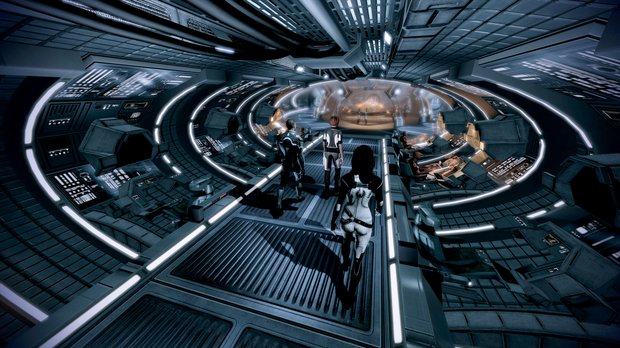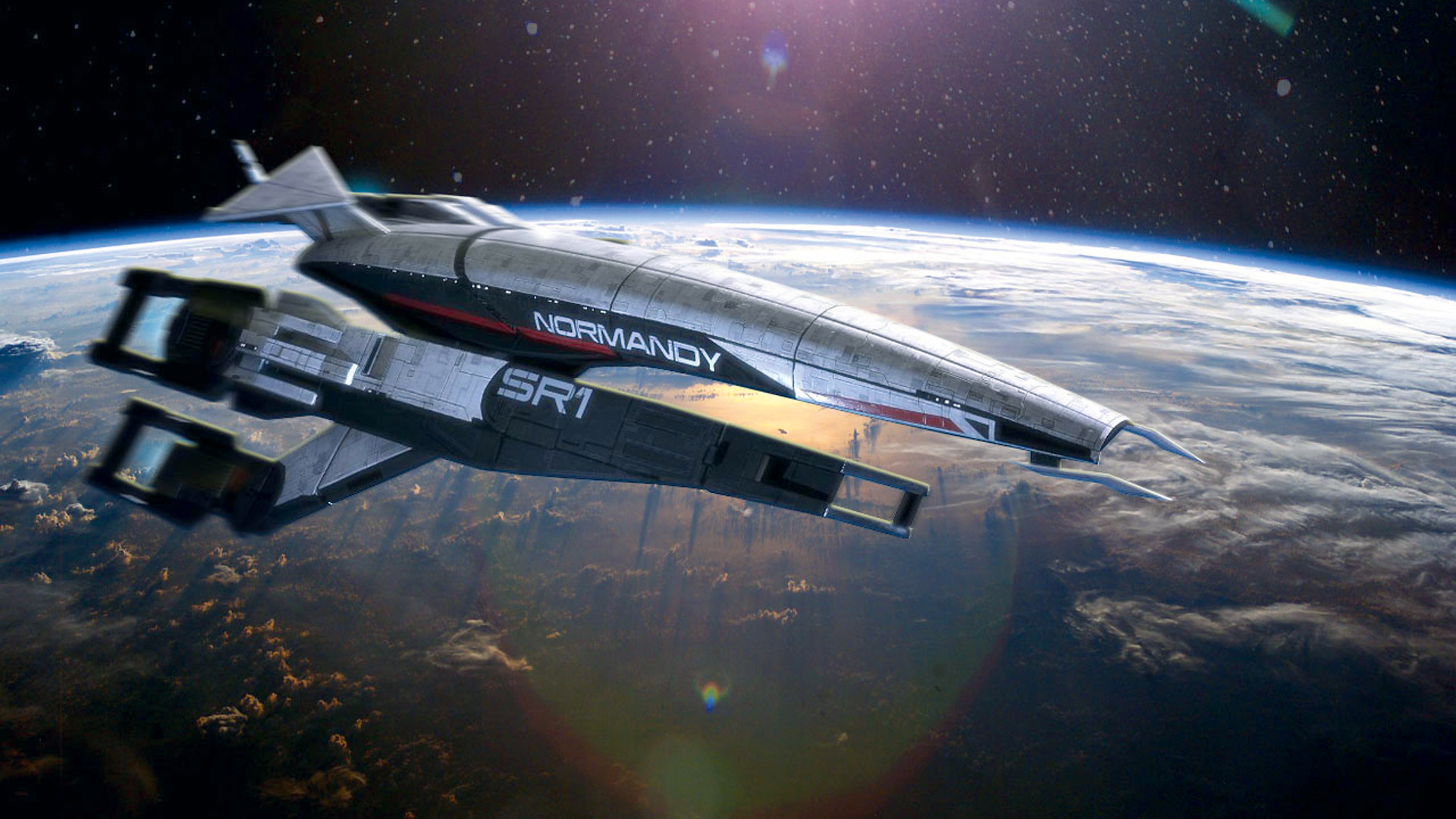Mass Effect's Normandy is far more than a space-age touring car
Commander Shepard is many things: hero, flirt, compassionate friend, callous pragmatist and more. But while BioWare offers a host of opportunities to steer your character’s moral temperament and actions, humanity’s first Spectre has constants, too. For instance, Shepard is always a ship’s captain.

Of the two vessels to bear the Normandy name, both are remarkable. The first, the SR-1, is presented in the game’s fiction as a prototype stealth vessel made with help from the once-hostile Turians. As such, it symbolises an uneasy truce between these aliens and the relatively new-on-the-galactic-scene human race, an alliance enshrined in sleek black and silvery grey. And in a series that’s all about choice, asking how you’ll respond to being the newcomer has become a key theme. What’s your take on this weird assortment of often anthropomorphous aliens, with their tentacle hair, dinosaur-like builds and frog eyes? Do you trust them enough to sacrifice ‘real’ humans for them?
Ironically, giving players a ship is the very thing that grounds BioWare’s foray into new sci-fi IP space. In one stroke, it provides you with a home, a mission hub, and, most importantly, time to get to know your squadmates. It’s a soaring master class in how to create effective hub worlds, with both a sense of place and purpose that compels you to look past its host games’ failings.
In some ways, the facade is obvious: step onto the platform before the galaxy map to hop about the Milky Way, or head to the hold to tweak your squad’s equipment. And if the Normandy held these things alone, she’d be little more than a strip-lit level select and menu system. Her power lies in meshing mechanics with what the Mass Effect series does best: building characters.

Interactions aboard the Normandy SR-1 are mostly optional, though, allowing you to explore its pristine halls without feeling burdened by the need to tick conversational boxes before your next adventure. It’s a subtle point, but a crucial one when the whole premise is built on choice. If you do pick up the threads of backstory and plot development with your squad, your reward is the chance to gain insight into their lives, loves and problems. It encourages you to invest in these people, both emotionally and via the kit and stat management systems, adding potency when you are forced to make hard choices about their lives.
Giving you command of them pins the epaulet of responsibility to your shoulders, too, which you can carry through to interactions elsewhere. And the quality time you spend with them means the game’s controversy-baiting sexual relationships have the potential to hold real emotional weight, elevating them beyond mere carnal titillation (although the series does offer this in its club dancers and flirtatious supporting cast).
The SR-1 wasn’t perfect, though: while your squad was often well fleshed out, repeat conversations with some crew members revealed them for the dialogue-spewing answering machines they were, breaking your suspension of disbelief. Take into account the game’s other flaws – repetitive missions, overly complex kit management and more – and you can hardly blame BioWare for wanting to spruce the place up when the time for a sequel rolled around.
Weekly digests, tales from the communities you love, and more
"Her flaws have been buffed to a space-age sheen."
But it did considerably more than that. Mass Effect 2 kicks off with a mini-mission that sees the SR-1 torn to shreds in a dramatic space battle and soon replaced by a successor, the SR-2. The signal is clear: this is intended to be an altogether more action-orientated game, and the writers are prepared to turn their world (and yours) upside down in the name of spectacle.
Larger than her predecessor, slicker and shiner, but broken up by flow-halting loading screens, the SR-2 is again a clear mirror to the structure of the games it traverses. Her flaws have been buffed to a space-age sheen; her halls are aglow with bloom. Mechanically, character management is more immediate, with an optional auto-levelling system, and upgrade terminals on the SR-2 replacing tedious side-by-side item comparisons.
But the ship’s VI, EDI, illustrates a shift in BioWare’s expectations of players. While Mass Effect casts the Normandy’s character as a subtle combination of the various personalities aboard her, BioWare’s designers felt the need to go one step further and humanise that entity, first in a glowing sphere, and then even more obviously for Mass Effect 3. It’s a move endemic to a pair of games that are more tightly designed, often more fun and definitely more ‘gamey’ than their point of inception, but that also distance themselves from requiring a commitment to the same levels of depth. For Mass Effect 2, BioWare happily rounds off its series’ RPG edges in favour of getting bums – often belonging to gamers now smitten with the Gears Of War format – on seats.
But what seats they were, bolted firmly to a rollercoaster ride full of mechs, menace and biotic-based mayhem. You may have been served more compulsory discussions and lost the room to potter, but reduced freedom came alongside a sense of pace, and of an idea reaching maturation.

Mass Effect 3 retains the SR-2, and continues to chart a course toward immediacy at the cost of agency. For instance, a war room has been tucked into the SR-2’s bowels, providing an excuse to funnel mission-focused conversations at you. But perhaps this suits its story. After all, there are more serious things to talk about than childhood dreams in a galaxy on the brink of extinction.
Read more from Edge here. Or take advantage of our subscription offers for print and digital editions.
Edge magazine was launched in 1993 with a mission to dig deep into the inner workings of the international videogame industry, quickly building a reputation for next-level analysis, features, interviews and reviews that holds fast nearly 30 years on.



